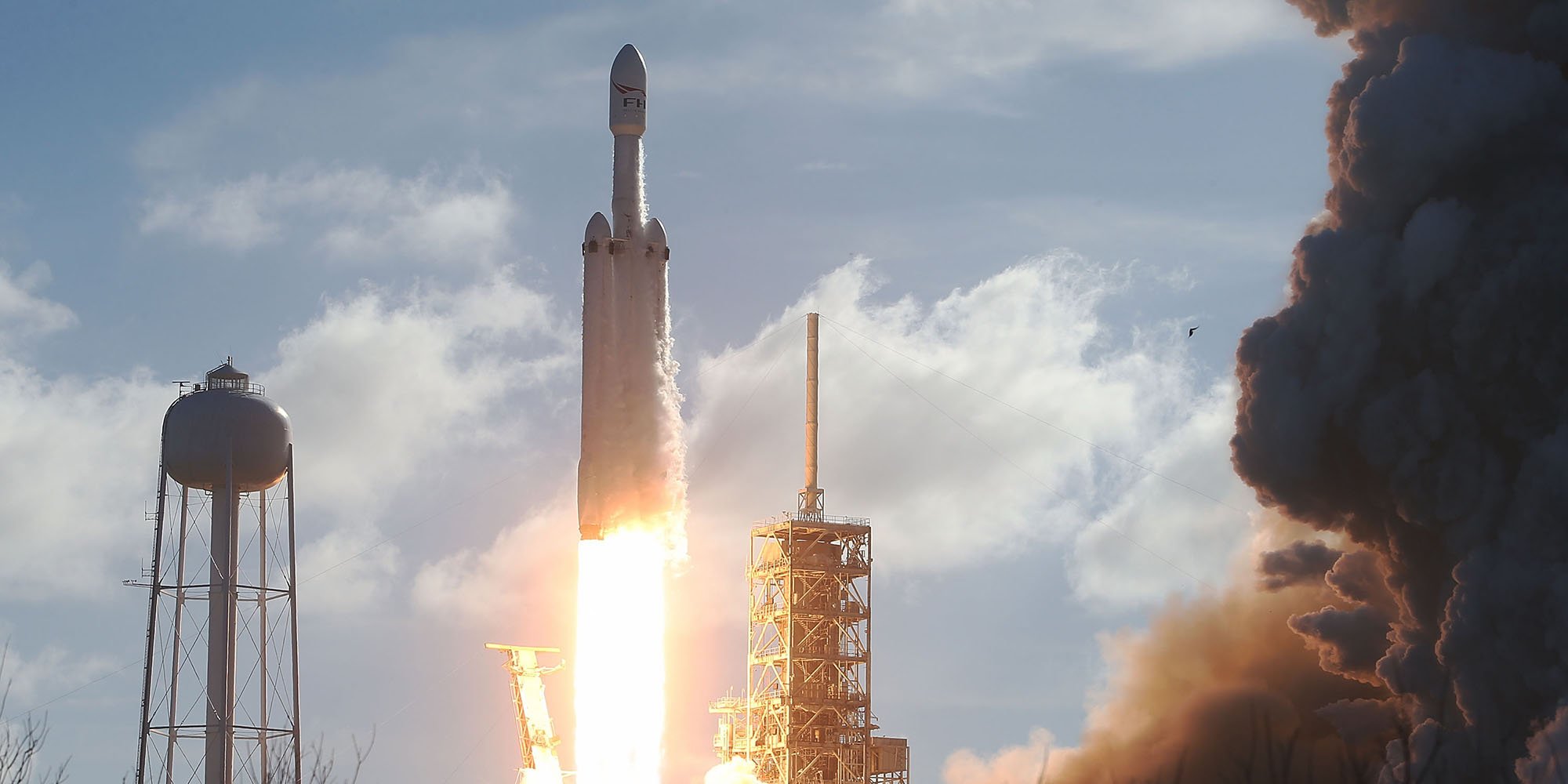SpaceX’s Falcon Heavy rocket, the most powerful launch system on Earth, roared into the sky on Tuesday afternoon atop a pillar of smoke.
The rocket’s three reusable boosters lifted the vehicle skyward, ultimately helping send Elon Musk’s personal Tesla Roadster on a journey toward Mars orbit.
Musk, SpaceX’s founder, was worried that his experimental 23-story rocket might explode with the force of 4 million pounds’ worth of TNT. But Falcon Heavy did not meet that fate and successfully cleared Launchpad 39A here at Kennedy Space Center.
“That was probably the most exciting thing I’ve ever seen — literally ever,” Musk said at a press conference after the launch. “It taught me crazy things can come true. I didn’t really think this would work.”
The first reusable heavy-lift rocket makes its debut

Musk readily admits that his test payload is silly. But the successful liftoff of Falcon Heavy, a system expected to cost about $90 million per launch, could disrupt the launch industry.
“It means we’re able to offer heavy lift … for not much more than the cost of a Falcon 9,” Musk told reporters on Monday, referring to SpaceX’s $62 million single-booster rocket. “If we’re successful in this, it is game over for all other heavy-lift rockets.”
The key to Falcon Heavy’s low cost lies in the reusability of its 134-foot-tall boosters, each of which costs tens of millions of dollars to build. Other rocket boosters currently on the market are discarded after launch.

The rocket’s two side boosters landed safely on the ground after launch on Tuesday. The central booster was supposed to land on a drone ship in the Atlantic Ocean, but it instead missed the ship and hit the water at a speed of 300 mph, Musk told reporters during a press conference after the launch.
The booster didn’t have enough propellant, he said, and its crash took out two propellers on the drone ship while showering the deck with shrapnel.
“That sounds like some pretty fun footage, so if the cameras didn’t get blown up as well, we’ll put that out,” Musk said.
SpaceX was not intending to reuse any of the three boosters, though Musk said the company will find a place for the two that returned intact.
The fate of Musk’s Roadster and ‘Starman’ driver

After the launch, Musk said in a tweet that the upper stage — the part of the rocket carrying the car and its dummy driver, called Starman — successfully completed its burn to swing between Mars and Earth.
“Third burn successful. Exceeded Mars orbit and kept going to the Asteroid Belt,” Musk said, posting a photo of the orbital with his tweet.
In addition to a spacesuit-clad dummy, Musk’s Roadster has a suite of video cameras that “should really provide some epic views,” he said, and they delivered: A live feed of the payload streamed online for a couple of hours. (Musk said the batteries should keep the feed powered for about 12 hours.)
“It looks so ridiculous and impossible. You can tell it’s real because it looks so fake, honestly,” Musk said at the post-launch press conference.
But he added: “The imagery of it is something that’s going to get people excited around the world, and it’s still tripping me out. I’m tripping balls here.”
Falcon Heavy’s uppermost stage, which carried Musk’s tricked-out car, coasted through intense radiation fields around Earth’s magnetic Van Allen belt.
“It’s going to get whacked pretty hard” by high-energy particles, Musk said Monday. “It’s actually a radiation environment significantly worse than deep space … Think of the Van Allen belt as being essentially like a concentrating lens of charged particles.”
Radiation didn’t zap the electronics of the upper-stage rocket, though, as its engines fired up, accelerated Musk’s Roadster to about 24,600 mph, and injected it into an orbit that will loop indefinitely between Earth and Mars. The car’s orbit may last for hundreds of millions of years or possibly more than a billion years.
This risky six-hour maneuver was partly to prove SpaceX’s rocket can survive the punishment, Musk said Monday — and hopefully win over new launch customers.
SpaceX is hoping to demonstrate that Falcon Heavy is capable of sending a spaceship and supplies out to the red planet.
Next: Falcon Super Heavy?

Musk previously said Falcon Heavy’s success would be akin to placing it in a market “where one aircraft company has reusable aircraft and all the other aircraft companies had aircraft that were single-use.”
“You sort of parachute out to your destination, and the plane would crash-land somewhere,” he said. “Crazy as that sounds, that’s how the rocket business works.”
Musk also said Tuesday’s Falcon Heavy launch would be just the beginning of a flexible and powerful system that’d closely match the power of NASA’s historic Saturn V rocket.
“We could really dial it up to as much performance as anyone could ever want,” he told reporters on Monday. “If we wanted to, we could actually add two more side boosters and make it Falcon Super Heavy, with … upwards of 9 million pounds of thrust.”
With enough fuel and the right trajectory, the system has enough thrust to launch a payload heavier than a car to Pluto, let alone Mars.
“It could actually go further than they went with Apollo — possibly visit an asteroid or something like that,” Musk said.
That would appeal to NASA, which is gearing up to launch several planet-, moon-, and asteroid-bound spacecraft in the coming years. The space agency is also in an ever-present budget pinch — and behind schedule in building its own super-heavy-lift rocket, called Space Launch System.












